Future fare tipped to be GM, GE, ‘organic’ or none as shortages compound
One of the longest running, loudest and bitterest debates about food in modern times centres on the relative virtues of genetically modified and organic crops. Advocates of each decry the other, while simultaneously boosting their choice as the only sensible solution for meeting the world's future food needs.
A report published earlier this month, however, might be the catalyst to end the division and, just perhaps, bring the two camps together to focus on a common goal.
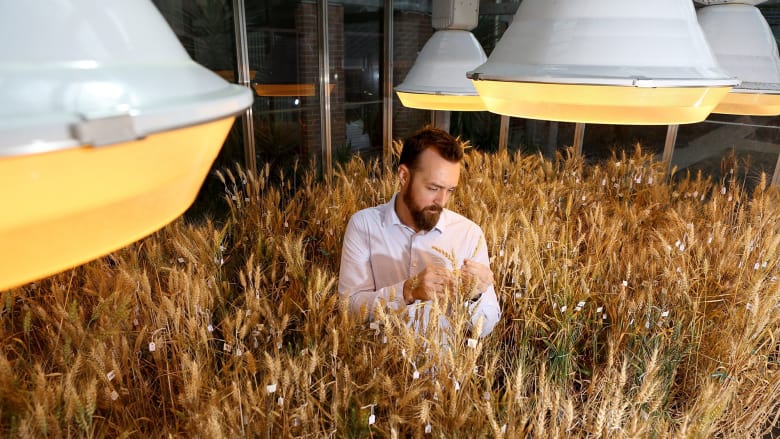
Photo: Michelle Smith
The study, conducted by US plant geneticists Johannes Kromdijk and Stephen Long of the University of Illinois, strongly suggests that all types of crop breeding – including genetic engineering and organic – need to be pressed urgently into service if we are to escape famine caused by rising population and climate change.
Published in the Royal Society's journal Proceedings B, the authors estimate that the world has perhaps until the mid-2040s to dramatically improve cereal crop yields in order to offset severe shortages.
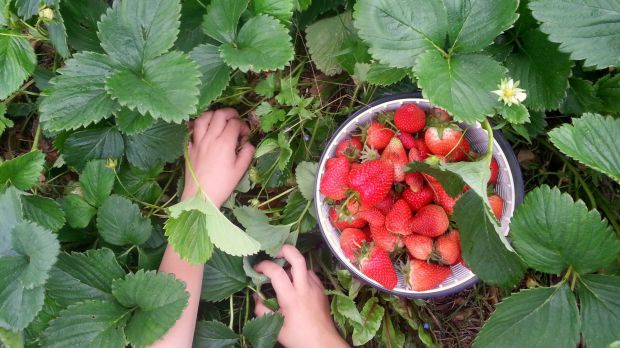
"With the short time-scale at which food demand is expected to outpace supplies, all available technologies to improve crop varieties, from classical crop breeding to crop genetic engineering, should be employed," they wrote. They called for "vastly increased" private and public investment in the process.
The main game, the researchers suggest, lies in employing every available horticultural strategy to breed better cereal crops. The goal is not to plant more wheat, for instance, but to make the wheat that is planted better at changing sunlight into edible grain.
It is a quest already under way in Australia, through the world-leading research of plant geneticist Dr. Lee Hickey and his team at the University of Queensland.
"Historically we've seen dramatic improvements in wheat yield since the 1940s, but the rate of genetic progress has slowed, and this has got the world quite worried because of the booming population, and meeting the demand by 2050," he said.
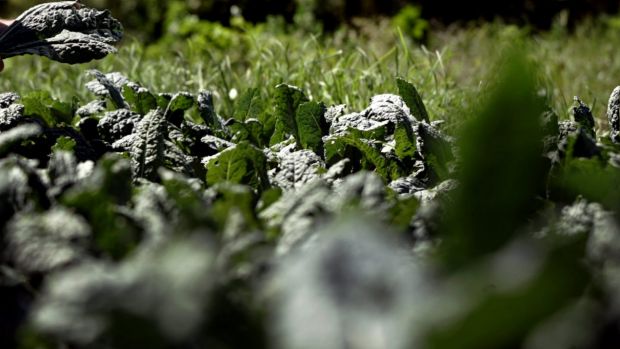
"We haven't yet seen any dramatic increase in improving the efficiency with which sunlight is converted to biomass in plants. This could be done through genetic engineering processes and could be a key component of us meeting the future demand."
While certainly open to GM as a way of increasing crop yields, Hickey primarily uses conventional cross-breeding methods, helped by sophisticated genome tinkering and high-intensity laboratory techniques.
He and his team are developing strains, mainly wheat and barley, that are ever more heat, drought and disease-resistant.
One of the most effective research techniques they use is called speed-breeding – a lab-based method of producing up to six wheat crops a year, compared with the single one farmers are able to grow in fields. The rapid growth cycles permit equally rapid research, using both conventional techniques and DNA modification.
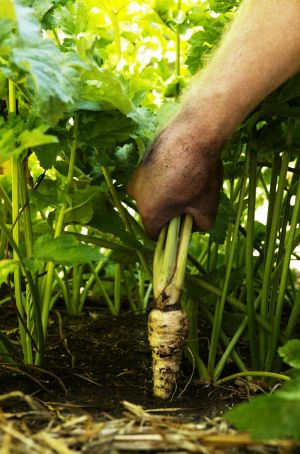
vegetables and fruit from the
vegetable garden.
Photo: Jennifer Soo
"We're using DNA markers to inform our decisions about which plants carry desirable genes. That's pretty close to genetic engineering. Essentially we need to clone the genes before we can create DNA markers that are perfectly linked to the trait we're after," Hickey said.
It's an approach that is unlikely to please Australia's organic food advocates, who stress the need for crops to be "natural" and grown without expensive inputs such as factory-made fertilisers and pesticides. From that perspective, organic farming has a strong role to play in meeting future global food needs, especially in energy-challenged developing economies.
The call by Kromdijk and Long for all hands on deck, however, might go some way towards breaking down the differences between the organic and GM camps, a division that many observers regard as unjustified – on both rational and biological grounds.
In a very real sense, they point out, every fruit, vegetable and cereal grown today is genetically modified, the result of millennia of cross-breeding aimed at developing desirable qualities. Kale, broccoli, Brussels sprouts and cauliflower, for instance, have never existed in the wild, and are all purposely developed variants of a species of weedy cabbage.
But there is also another form of genetic modification that has been used for decades, and that has been largely overlooked by organic advocates. This is strange, because it has some genuinely scary aspects to it. It's called mutagenesis, and involves blasting plants with radiation.
Today, at farmers' markets and in grocery stores around the country, people are happily filling hessian shopping bags with organic ruby red grapefruit and organic Nijisseiki pears. And soon, many organic farmers are preparing to plant a popular Australian oat variety known as Echidna.
The pears, the citrus and the cereals are all excellent, nutritious and lovely, but their existence raises a curious question. Is it possible for a food crop to be simultaneously organic and genetically modified?
Evidently so. All three plants were created, several decades ago, by radiation-induced mutagenesis. Their radioactive provenance is recorded on a global permanent record called the Mutant Variety Database (MVD), operated jointly by the United Nations Food and Agriculture Organisation and the International Atomic Energy Agency.
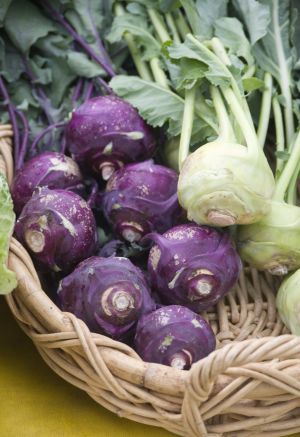
The MVD currently lists 3233 edible or ornamental mutagenic plant varieties. The most recent addition was a type of cherry developed in Turkey in 2014, but, in general, these days mutagenesis is rather less popular as a method of genetic modification than it used to be. And for good reason.
"There are two main ways that plant breeders can use this tool to create variation," explained Hickey. "One is through gamma radiation and the other is through a chemical called ethyl methanesulfonate or EMS. Basically both of these things induce a higher rate of mutation in the genome. And both, when we are exposed to them, cause us to get cancer."
The technique is still in use, particularly in rice development, but its decline in popularity among plant geneticists is only partly because of the health risks to lab workers associated with improper use. Mostly it's because it's just not that efficient.
Plants are blasted with radiation as a means of accelerating the genome's natural mutation rate. Scientists then have to trawl through the resulting changes to DNA in individual plant sex cells – or check which plants grow better from irradiated seeds – and then single them out for further breeding.
"Basically, you have no control whatsoever, unlike a technology like genetic engineering, where you are specifically targeting a known gene," said Hickey.
While DNA changes in fruit, vegetables and cereals resulting from gene-editing have come under ferocious and sustained attack by organisations that represent organic farmers, those arising from mutagenesis have largely avoided scrutiny.
"The organic industry has no formal position on mutant varieties," said Jan Denham, chairwoman of the National Association for Sustainable Agriculture Australia (NASAA). She said she is seeking input from the organic industry to formulate a policy on the matter.
A spokesperson for Australian Certified Organic (ACO) – an organisation that labels over 16,000 products as organic – said guidelines ruled out the use of seeds or seedlings that were "irradiated". However, at least two Australian ruby red grapefruit growers operate under ACO approval, which suggests that ancestral exposure to gamma rays is not a barrier to organic authenticity.
Thus, if genetic modification by breeding is acceptable, and food crops created by gamma radiation cause no uproar, what is so special about varieties made by gene editing?
"Most of the time we're talking about fixing or inserting a gene into a species that currently exists," said Hickey.
"The problem is that to do it by traditional means takes a long time. It takes up to 20 years to develop a new variety – by the time we cross it with another variety and identify an elite version that can be commercialised. It's basically just speeding up this process."
It's an approach greatly favoured by the Grains Research and Development Corporation, which funds Hickey's research, but it also raises what might turn out to be a critical question.
Can a crop variety engineered in five years, as opposed to a very similar variety cross-bred in 20, ever be considered suitable for organic cultivation? Millions of lives might depend on the answer.
RELATED RIPE OBJECTIVES
Advancing Translation